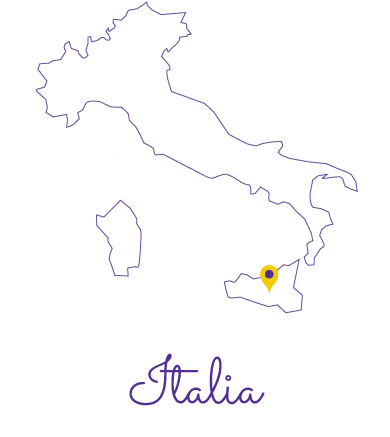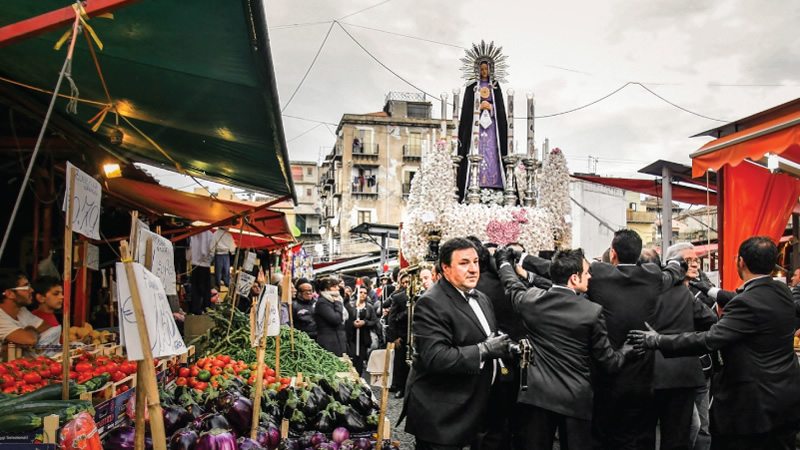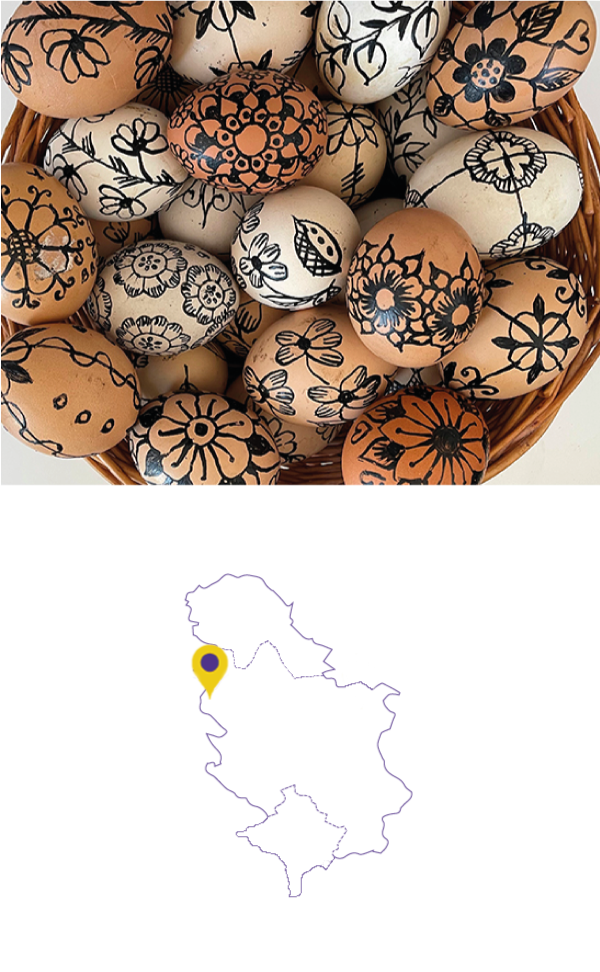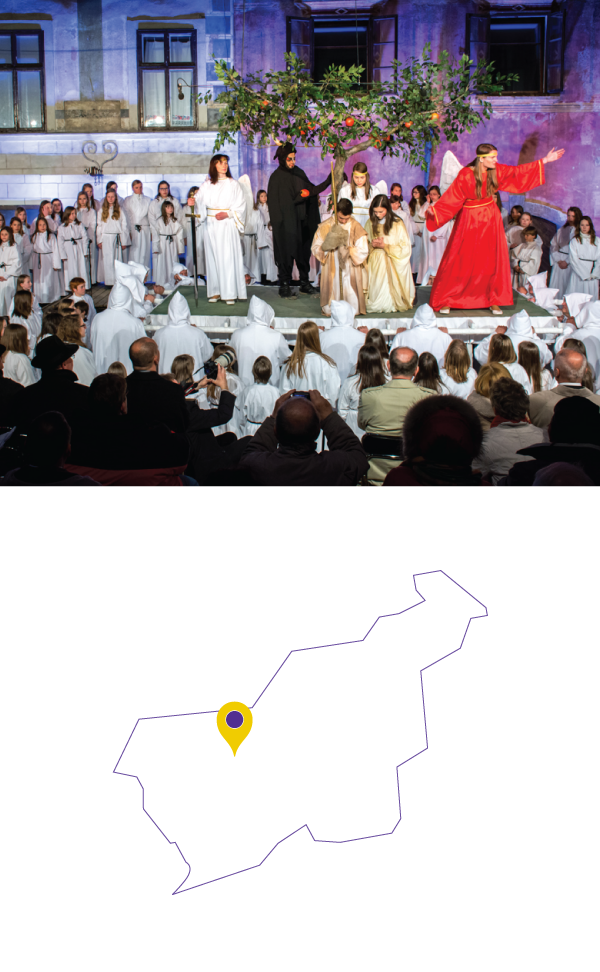The Italian city of Enna is located in the center of the island of Sicily, at more than 900 meters above sea level, making it the highest capital in the country. Its mild climate made it a good refuge from the island’s scorching heat, to the point that Emperor Frederick II of Swabia built the octagonal tower of the same name here as a summer residence. The city’s history dates back to the Neolithic period. The Romans called it Urbs Inexpugnabilis due to its proverbial resistance to conquest.
Enna
Travelling the network
Enna
BACKGROUND

WHAT TO SEE
Among the most significant historical monuments is the Castle of Lombardy, one of the largest in Italy, which owes its name to the Lombard infantry soldiers who garrisoned the fortress. Of its twenty towers, only six remain today, including the Pisan Tower, from which visitors can enjoy a vast panorama stretching from the Madonie Mountains to Mount Etna.
Nearby is Lake Pergusa, the only remaining natural freshwater reservoir on the island. Surrounded by unspoiled nature, its full circuit spans five kilometers.
Visitors can also explore the Cathedral of Enna, dedicated to the Virgin Mary in 1307 by Eleanor, wife of Frederick II of Aragon. A devastating fire in 1446 destroyed much of it, and after restoration, only the original apse remains.
Inside, its spaciousness and variety of styles are impressive, featuring basalt rock columns that separate the three naves, an 18th-century Mannerist pulpit, a grille from the harem of an Arab castle, polychrome marble, and the Virgin of the Visitation, Enna’s patron saint. This 15th-century sculpture is carried in a procession every July 2nd on a richly adorned float known as “the golden ship.”
Attached to the temple is the Alessi Museum, which houses the cathedral’s treasure, Sicilian goldsmithing masterpieces, and an outstanding numismatic collection.
Among other heritage sites, visitors can find the Tower of Frederick II, the Villa Romana del Casale, Piazza Armerina, and, in the city’s outskirts, the Byzantine settlement of Vallone Canalotto.
HOLY WEEK AND EASTER

The Holy Week of Enna consists of a series of religious processions derived from ancient Spanish traditions. These celebrations attract thousands of devotees and tourists and represent the most important event for the city and its province, as well as one of the most significant Holy Week rites in Sicily. The rituals have been recognized by the Region of Sicily as an event of international tourist interest and included in the Register of Sicily’s Intangible Heritage.
During the Good Friday procession, around 3,000 hooded friars march solemnly, carrying the fercoli (sacred floats) of the Dead Christ and Our Lady of Sorrows, accompanied by various funeral marches. Other significant events include the Adoration of the Blessed Sacrament processions, held from Palm Sunday to Holy Wednesday, culminating in the sacred reenactment “The Passion and Death of Jesus” in Pergusa, featuring over 100 participants. On Holy Thursday, artistic displays adorn the altars, and processions continue until Easter Sunday.
The processions are linked to Enna’s earliest confraternities, which emerged in the Late Middle Ages, but it was the 17th century that saw a remarkable increase in their number. This growth is widely attributed to Spanish influence, which spread across the island during their rule from the 15th century until 1700. It was precisely the Spanish dominion that encouraged the proliferation of confraternities, modeled after Iberian brotherhoods.
At that time, these were true congregations that, thanks to the extensive powers and privileges granted to them by the Spanish kings, wielded significant social influence and authority over the people. The monarchs, strongly tied to the Church and its territorial institutions, often bestowed royal titles upon the most important or prestigious confraternities, granting them honors such as Venerable, Royal, Noble, and Loyal. The very hierarchy of these brotherhoods reflected their power, which was often more deeply rooted and widespread than even that of the monarchy. Each congregation elected its eldest member as leader, who was automatically granted broad privileges.
This leader, known as the Rector of the Confraternity, was awarded prestigious titles such as Monsignor, Procurator, and Governor, and by right, he held a seat in the Civic Senate. The Rectors had such great influence in the city—where they were seen as a kind of sacred authority—that they were even granted the power to pardon three prisoners on the day of their confraternity’s patron saint celebration.
In 1714, at the height of Enna’s confraternity movement, the Viceroy of Sicily, Count Annibale Maffei, issued a decree establishing the College of Rectors, an institution that brought together all the confraternity leaders in the city. This body quickly became the most powerful and influential institution in Enna, as it united the city’s main religious authorities. After several turbulent centuries, it was permanently reinstated in 1944. Today, it is responsible for organizing the Easter religious rites and overseeing the activities of the confraternities, operating under a governing board of 16 members.














